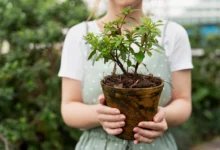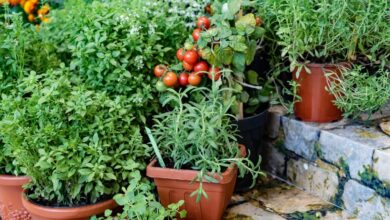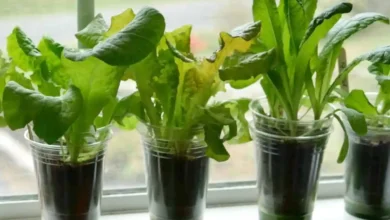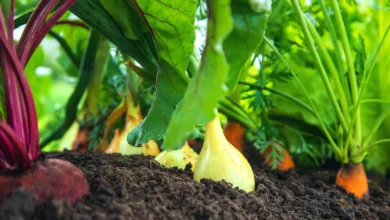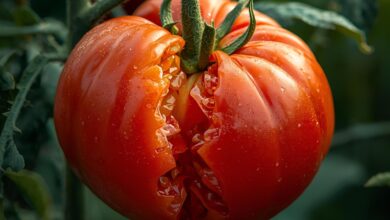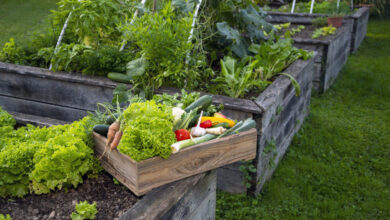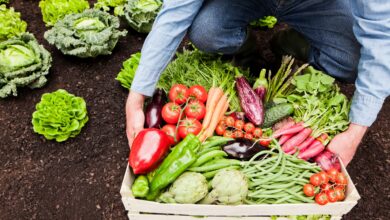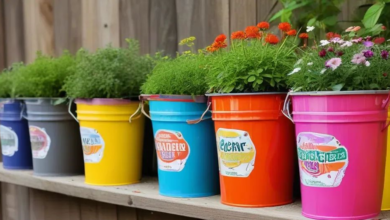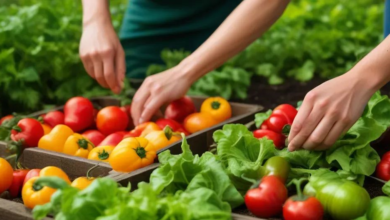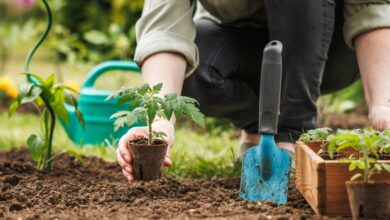How to Grow Tomatoes in 5 Gallon Buckets Complete Guide for Small Spaces
Learn how to grow Tomatoes in 5 Gallon Buckets with our complete guide. Perfect for small spaces, balconies, and patios. Get expert tips today!
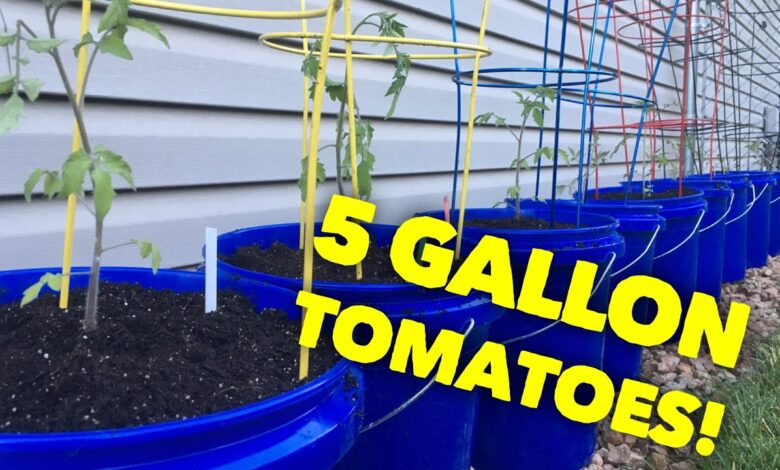
Tomatoes in 5 Gallon Buckets has revolutionized urban gardening and transformed the way home gardeners approach container gardening. Whether you live in an apartment with a small balcony, have limited yard space, or simply want to maximize your growing area, bucket gardening offers an innovative solution that delivers impressive results. The beauty of cultivating tomatoes in containers lies in its simplicity, affordability, and accessibility—anyone can start growing fresh, juicy tomatoes regardless of their living situation.
Tomatoes in 5 Gallon Buckets have become increasingly popular among both novice and experienced gardeners because they provide the perfect growing environment when properly prepared. These versatile containers offer adequate root space, excellent drainage capabilities, and portability that traditional in-ground gardening cannot match. You can move your tomato plants to follow the sun, protect them from unexpected weather changes, and even bring them indoors during harsh conditions.
The practice of growing tomatoes in buckets eliminates many common gardening challenges. You won’t need to worry about poor soil quality, competing weeds, or soil-borne diseases that often plague traditional gardens. Container tomatoes also allow for better pest management and easier maintenance, making them ideal for busy individuals who want fresh produce without the extensive time commitment of a full garden.
This comprehensive guide will walk you through every aspect of bucket tomato growing, from selecting the right bucket and preparing your growing medium to choosing the best tomato varieties for containers and maintaining healthy plants throughout the growing season. You’ll discover professional techniques for watering, fertilizing, and supporting your plants, along with troubleshooting tips for common problems. Whether you’re planting determinate or indeterminate tomatoes, this guide provides everything you need to cultivate a thriving small-space garden that produces abundant, flavorful tomatoes from summer through fall. Get ready to transform those ordinary plastic buckets into productive mini-gardens that yield delicious homegrown tomatoes you’ll be proud to harvest.
Why Choose 5-Gallon Buckets for Growing Tomatoes
Tomatoes in 5 Gallon Buckets offers numerous advantages that make this method increasingly popular among urban gardeners and homesteading enthusiasts. The primary benefit is space efficiency—these containers can fit on apartment balconies, patios, decks, or even fire escapes, enabling anyone to enjoy homegrown tomatoes regardless of property size.
Bucket container gardening provides superior control over growing conditions. Unlike in-ground planting, you can select the perfect potting soil, ensure optimal drainage, and avoid contaminated or poor-quality garden soil. This controlled environment significantly reduces the risk of soil-borne diseases and pest infestations that commonly affect traditional tomato gardens.
Cost-effectiveness is another compelling reason to choose Tomatoes in 5 Gallon Buckets. These containers are readily available at hardware stores, restaurant suppliers, or even free from bakeries and food service establishments. This affordability makes bucket gardening accessible to gardeners on any budget, especially compared to expensive raised beds or specialized planters.
Mobility and flexibility set container tomatoes apart from traditional gardening methods. You can easily relocate your tomato plants to capture maximum sunlight throughout the day or move them to sheltered areas during storms, extreme heat, or unexpected cold snaps. This portability extends your growing season and protects your investment in plants and supplies.
The manageable size of Tomatoes in 5 Gallon Buckets makes maintenance tasks like watering, fertilizing, and harvesting more convenient. You can arrange multiple buckets at comfortable heights, reducing back strain and making small-space gardening more enjoyable for people of all ages and physical abilities.
Selecting the Right 5-Gallon Bucket
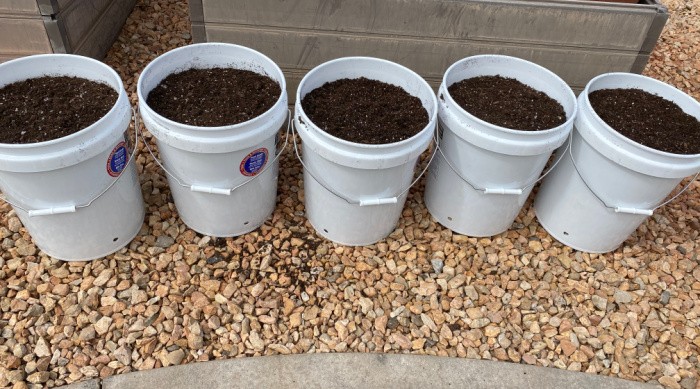
Choosing appropriate containers is crucial for successfully growing Tomatoes in 5 Gallon Buckets. Not all 5-gallon buckets are created equal, and selecting the right type ensures healthy plant growth and food safety.
Food-Grade vs. Non-Food-Grade Buckets
Always prioritize food-grade buckets for growing vegetables. These containers are manufactured from plastics that don’t leach harmful chemicals into the soil or your plants. Look for buckets marked with recycling code #2 (HDPE) or #5 (PP), which indicate food-safe materials. Restaurant supply stores, bakeries, and delis often give away food-grade buckets that once contained pickles, frosting, or other ingredients.
Avoid buckets that previously held toxic chemicals, paints, or industrial products, even if thoroughly cleaned. Residual chemicals can persist in plastic and contaminate your tomato plants, making the fruit unsafe for consumption.
Bucket Color Considerations
Bucket color affects root temperature, which directly impacts plant health. Light-colored buckets (white, light gray, or beige) reflect sunlight and keep roots cooler in hot climates. This is essential for container gardening in areas with intense summer heat, as overheated roots can stress plants and reduce fruit production.
Dark-colored buckets absorb more heat, which can benefit gardeners in cooler climates by warming the soil earlier in spring. However, in most regions, lighter buckets provide better year-round performance for growing tomatoes.
Bucket Condition and Quality
Inspect buckets carefully before use. Choose sturdy containers without cracks, warping, or significant UV damage. Brittle or degraded plastic can break during the growing season, potentially damaging roots and killing your tomato plant. New or gently used buckets will last multiple seasons, making them a worthwhile investment for bucket container gardening.
Essential Materials and Tools
Successfully growing Tomatoes in 5 Gallon Buckets requires gathering the right materials before planting. Having everything prepared ensures a smooth setup process and gives your tomato plants the best start possible.
Drainage Tools
Proper drainage is absolutely critical for container tomatoes. You’ll need a drill with a 1/4-inch to 1/2-inch bit to create drainage holes. Plan to drill 4-6 evenly spaced holes in the bottom of each bucket. Without adequate drainage, water accumulates, causing root rot and plant death—one of the most common failures in bucket gardening.
High-Quality Potting Mix
Never use garden soil or topsoil for Tomatoes in 5 Gallon Buckets. These heavy soils compact in containers, suffocating roots and preventing proper drainage. Instead, invest in a premium potting mix specifically formulated for vegetables. Quality mixes contain peat moss or coco coir, perlite or vermiculite for drainage, and often starter nutrients.
For optimal results, create a custom blend: 60% potting mix, 20% compost, 10% perlite, and 10% vermiculite. This combination provides excellent drainage, nutrient retention, and root aeration necessary for healthy tomato plant growth.
Support Structures
Most tomato varieties require sturdy support systems. For Tomatoes in 5 Gallon Buckets, consider these options:
- Tomato cages: Choose 4-5 feet tall cages made from heavy-gauge wire
- Stakes: Use 6-foot wooden or metal stakes driven deep into the soil
- Trellises: Attach to walls or fences for vertical growing space
Determinate tomatoes need less support than indeterminate varieties, but all plants benefit from some structure to prevent branches from breaking under fruit weight.
Fertilizers and Amendments
Container tomatoes deplete nutrients faster than in-ground plants. Stock up on:
- Balanced slow-release fertilizer (10-10-10 or 14-14-14)
- Water-soluble tomato fertilizer for weekly feeding
- Calcium supplement to prevent blossom end rot
- Epsom salt for magnesium (1 tablespoon per bucket at planting)
Additional Supplies
Mulch materials (straw, shredded bark, or landscape fabric) help retain moisture and regulate soil temperature. A watering can or drip irrigation system ensures consistent hydration, which is essential for Tomatoes in 5 Gallon Buckets.
Preparing Your 5-Gallon Buckets
Proper preparation transforms ordinary buckets into productive growing containers. This critical step directly impacts drainage, root health, and overall plant success in bucket container gardening.
Creating Drainage Holes
Turn your Tomatoes in 5 Gallon Buckets upside down and mark 4-6 spots evenly around the bottom. Using a drill with a 1/4-inch to 1/2-inch bit, create holes at each mark. Some gardeners also add 2-3 holes around the lower sides, about 1-2 inches from the bottom, for additional drainage capacity.
Drainage prevents waterlogging, which is the leading cause of failure when growing tomatoes in containers. Excess water must escape freely; otherwise, roots suffocate and rot within days.
Adding Drainage Layer
Although controversial among gardeners, adding a thin drainage layer can improve water movement in Tomatoes in 5 Gallon Buckets. Place 1-2 inches of materials like:
- Small stones or pebbles
- Broken pottery shards
- Perlite
- Landscape fabric over drainage holes
This layer prevents soil from washing through drainage holes while ensuring water exits freely—a crucial balance for healthy tomato plants.
Filling with Growing Medium
Fill your bucket with prepared potting mix to within 2-3 inches of the rim. This space prevents water and soil from spilling during watering. Never use garden soil, which compacts and suffocates roots in container gardening situations.
As you fill the bucket, gently firm the soil without compacting it. Loose, fluffy soil allows roots to penetrate easily and access oxygen—both essential for vigorous tomato plant growth.
Pre-Planting Amendments
Before introducing plants, mix amendments into your soil:
- 1 tablespoon Epsom salt for magnesium
- 1/4 cup bone meal for phosphorus
- 2-3 tablespoons slow-release fertilizer
These amendments establish a nutrient foundation that supports healthy growth throughout the season. Well-prepared soil is the secret to successfully growing Tomatoes in 5 Gallon Buckets.
Choosing the Best Tomato Varieties for Buckets

Selecting appropriate tomato varieties for containers significantly impacts your success with bucket gardening. Not all tomatoes thrive in confined spaces, so understanding variety characteristics helps you make informed choices.
Determinate vs. Indeterminate Tomatoes
Determinate tomatoes (bush types) grow to a predetermined height (3-4 feet), produce fruit over a concentrated period, and then stop growing. These varieties are ideal for 5-gallon buckets because they stay compact, require minimal support, and focus energy on fruit production rather than continuous growth.
Indeterminate tomatoes (vining types) grow continuously throughout the season, reaching 6-10 feet or taller. While they produce fruit over an extended period, they demand more space, larger containers, and substantial support structures. However, with proper care and support, many gardeners successfully grow indeterminate varieties in 5-gallon buckets.
Recommended Determinate Varieties
These compact tomato varieties excel in bucket container gardening:
- Bush Early Girl: Produces medium-sized fruit 50 days after transplanting
- Celebrity: Disease-resistant with excellent flavor, ideal for beginners
- Roma: Perfect paste tomato for sauces, determinate and prolific
- Patio Princess: Bred specifically for container growing, stays under 2 feet
- Mountain Fresh Plus: Large slicing tomatoes on compact plants
Recommended Indeterminate Varieties
If you prefer continuous harvest from indeterminate tomatoes, consider:
- Sweet Million: Cherry tomatoes perfect for small-space gardens
- Sungold: Exceptionally sweet orange cherry tomatoes, very productive
- Better Boy: Classic slicing tomato with disease resistance
- Cherokee Purple: Heirloom with rich, complex flavor
Cherry and Patio Varieties
Cherry tomatoes naturally adapt well to container gardening:
- Tiny Tim: Ultra-compact, produces cherry-sized fruit, perfect for buckets
- Tumbling Tom: Cascading variety ideal for elevated tomatoes in 5 Gallon Buckets
- Patio Choice Yellow: Compact hybrid producing sweet yellow cherries
Select varieties based on your climate, available sunlight, and personal taste preferences. Local garden centers often stock tomato varieties specifically adapted to your regional growing conditions.
Planting Tomatoes in Your Buckets
Proper planting techniques establish strong, healthy tomato plants that produce abundant fruit throughout the growing season. Growing tomatoes in 5-gallon buckets requires special attention to planting depth and timing.
Timing Your Planting
Wait until all danger of frost has passed and nighttime temperatures consistently stay above 50°F (10°C). Tomato plants are extremely sensitive to cold and will suffer damage or death from late frosts. In most regions, this means planting 2-4 weeks after your last expected frost date.
For container gardening, you have the advantage of mobility. Start plants slightly earlier than in-ground gardens, keeping buckets sheltered on cold nights. This flexibility extends your growing season and potentially increases yields.
Deep Planting Technique
Tomatoes develop roots along buried stems, making deep planting extremely beneficial for bucket container gardening. Remove lower leaves from your transplant, leaving only the top 2-3 leaf clusters. Bury the stem up to these remaining leaves, creating a deep planting that encourages extensive root development.
For leggy seedlings, try trenching: dig a shallow trench in your Tomatoes in 5 Gallon Buckets, lay the stem horizontally, and gently bend the top upward. Cover the horizontal portion with soil, leaving the leafy top exposed. This technique transforms weak seedlings into robust plants with extensive root systems.
Transplanting Seedlings
If starting from seed, transplant when seedlings develop 2-3 sets of true leaves and reach 6-8 inches tall. Harden off plants by gradually exposing them to outdoor conditions over 7-10 days. This acclimation prevents transplant shock and ensures a successful transition to bucket gardening.
When transplanting:
- Water the seedling thoroughly before removing it from its container
- Create a deep hole in your prepared Tomatoes in 5 Gallon Buckets
- Gently remove the seedling, keeping the root ball intact
- Place in the hole, burying deeply as described above
- Firm soil around the stem and water immediately
Installing Support Structures
Install tomato cages or stakes at planting time to avoid damaging roots later. Push supports deep into the soil, ensuring stability throughout the growing season. Proper support prevents branches from breaking and keeps fruit off the ground, reducing disease risk when Tomatoes are in 5 Gallon Buckets.
Watering Requirements and Techniques
Consistent, appropriate watering is perhaps the most critical factor in successfully growing tomatoes in 5-gallon buckets. Container tomatoes have unique water needs compared to in-ground plants and require careful attention.
Container Water Needs
Tomatoes in 5 Gallon Buckets dry out much faster than garden beds because the limited soil volume holds less moisture. During hot summer weather, tomato plants in buckets may need watering twice daily. Insufficient water causes blossom end rot, fruit cracking, and stunted growth—common problems in bucket container gardening.
Plants transpire (release water through leaves) based on temperature, humidity, and sunlight. On hot, sunny, windy days, water loss accelerates dramatically. Understanding these factors helps you adjust your watering schedule for optimal tomato plant health.
Daily Watering Schedule
Check soil moisture daily by inserting your finger 2 inches deep. If the soil feels dry at this depth, water thoroughly. During peak summer, established plants typically need:
- Cool climates: Once daily
- Moderate climates: 1-2 times daily
- Hot climates: 2-3 times daily
Newly planted tomatoes need frequent, light watering until roots establish. Once established, water less frequently but more deeply, encouraging deeper root growth that improves drought tolerance.
Proper Watering Technique
Water at the soil surface, avoiding wetting leaves, which promotes fungal diseases. Apply water slowly, allowing soil to absorb moisture without running through drainage holes. Each tomato in 5 5-gallon bucket typically needs 1/4 to 1/2 gallon per watering session, depending on plant size and weather conditions.
Morning watering is ideal for growing tomatoes in buckets, giving plants hydration for the day ahead and allowing leaves to dry before evening. Evening watering works in hot climates but can promote fungal problems in humid regions.
Mulching for Moisture Retention
Apply 1-2 inches of organic mulch (straw, shredded bark, or grass clippings) to the soil surface in your 5-gallon buckets for tomatoes. Mulch reduces evaporation, moderates soil temperature, and decreases watering frequency. This simple step significantly improves success with container gardening.
Signs of Watering Problems
Overwatering symptoms include yellowing leaves, wilting despite wet soil, and musty odors. Underwatering causes dry, crispy leaves, wilting, and fruit that cracks when watered. Adjust your schedule based on plant response to maintain healthy tomato plants in your bucket garden.
Fertilizing and Nutrient Management
Container tomatoes require regular fertilization because frequent watering leaches nutrients from the limited soil in Tomatoes in 5 Gallon Buckets. Proper nutrition ensures vigorous growth and abundant fruit production when growing tomatoes in buckets.
Tomato Nutrient Needs
Tomato plants are heavy feeders requiring nitrogen (leaf growth), phosphorus (root and fruit development), and potassium (overall plant health and disease resistance). They also need calcium (prevents blossom end rot), magnesium (chlorophyll production), and various micronutrients.
Bucket container gardening presents unique nutritional challenges. The small soil volume contains limited nutrients, and regular watering flushes these nutrients through drainage holes. Compensate with consistent fertilization throughout the growing season.
Initial Fertilization
At planting, incorporate slow-release fertilizer into your potting mix. Use balanced formulations (10-10-10 or 14-14-14) following package instructions for container gardening. Add bone meal for phosphorus and Epsom salt for magnesium, creating a nutrient foundation for young plants.
Regular Feeding Schedule
Begin supplemental feeding 2-3 weeks after transplanting, once tomato plants establish. Apply water-soluble tomato fertilizer every 7-10 days, following package instructions for container tomatoes. Consistent feeding prevents nutrient deficiencies that reduce yields and fruit quality.
Many gardeners alternate between balanced fertilizers and tomato-specific formulations with higher phosphorus and potassium (5-10-10 or 4-6-8). This approach supports both foliage growth and fruit development when growing tomatoes in 5-gallon buckets.
Organic Fertilization Options
For organic bucket gardening, consider:
- Fish emulsion: Provides nitrogen for vigorous growth
- Compost tea: Supplies diverse nutrients and beneficial microorganisms
- Worm castings: Gentle, complete fertilizer that won’t burn plants
- Organic tomato fertilizers: Formulated specifically for tomato varieties
Addressing Specific Deficiencies
Monitor plants for deficiency symptoms:
- Nitrogen deficiency: Yellowing lower leaves, stunted growth
- Phosphorus deficiency: Purple-tinged leaves, poor fruit set
- Calcium deficiency: Blossom end rot (dark, sunken spots on fruit bottoms)
- Magnesium deficiency: Yellow leaves with green veins
Address problems promptly with targeted amendments. For blossom end rot, spray calcium chloride solution on developing fruit or add lime to the soil. For magnesium deficiency, apply Epsom salt solution (1 tablespoon per gallon of water).
Sunlight and Positioning
Adequate sunlight is essential for successfully growing Tomatoes in 5 Gallon Buckets. Light drives photosynthesis, which fuels growth and fruit production in your container garden.
Sunlight Requirements
Tomato plants need 6-8 hours of direct sunlight daily for acceptable performance, but 8-10 hours produces optimal results. Insufficient light causes leggy growth, reduced flowering, and poor fruit development—common problems when growing tomatoes in containers in shaded locations.
Full sun exposure ensures strong stems, abundant flowers, and flavorful fruit. Container tomatoes receiving maximum sunlight consistently outperform plants in partial shade, producing heavier yields of higher-quality tomatoes.
Positioning Your Buckets
The mobility of 5-gallon buckets is a tremendous advantage. Observe sun patterns around your home and position buckets where they receive maximum light. South-facing locations typically offer the most sun in Northern Hemisphere gardens.
Track the sun’s movement throughout the day. Areas that seem bright in the morning might be shaded by the afternoon. Position buckets to capture consistent sun exposure, especially during peak hours between 10 AM and 4 PM, when light intensity is strongest for bucket gardening.
Adjusting for Season
As seasons progress, sun angles change. Be prepared to relocate 5-gallon buckets for tomatoes to maintain optimal light exposure. This flexibility is a key advantage of container gardening—you can chase the sun throughout the growing season.
In extremely hot climates (above 95°F regularly), provide afternoon shade to prevent heat stress. Move buckets to locations with morning sun and afternoon protection, or use shade cloth during the hottest hours. This strategy keeps tomato plants productive during temperature extremes.
Artificial Light Supplements
For balconies or patios with limited natural light, supplement with grow lights. LED grow lights designed for vegetables can extend your growing season or compensate for insufficient sunlight. Position lights 6-12 inches above plants, providing 12-14 hours of combined natural and artificial light for healthy tomato plant growth in small-space gardens.
Pruning and Plant Maintenance
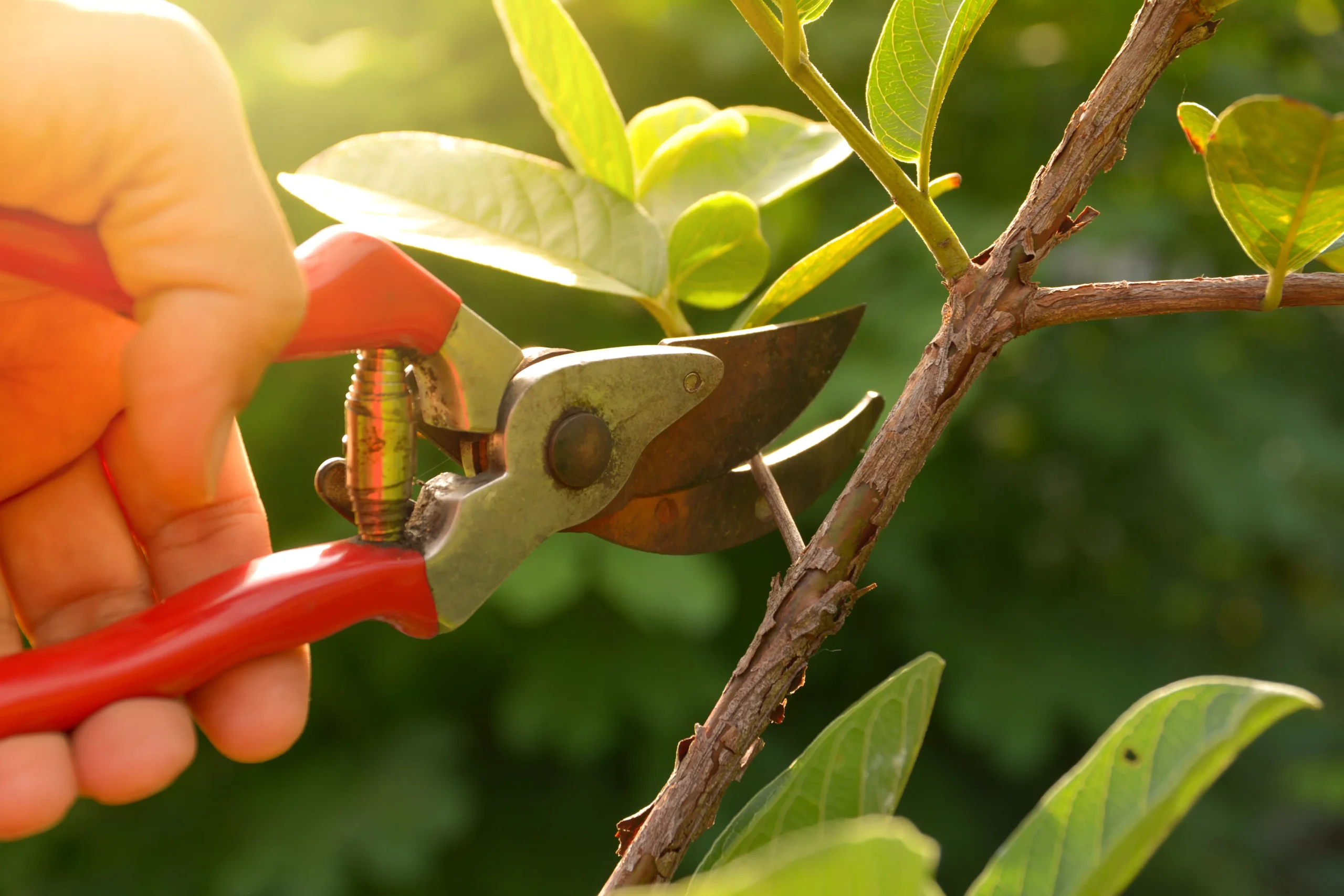
Regular maintenance keeps tomato plants healthy and productive throughout the season. Growing tomatoes in 5-gallon buckets requires special attention to pruning, given the limited space and resources available.
Removing Suckers
Suckers are shoots that emerge from the junction between the main stem and branches. On indeterminate tomatoes, removing suckers directs plant energy toward fruit production rather than excessive foliage growth. This practice is especially important for bucket container gardening, where resources are limited.
Pinch or cut suckers when they’re small (2-3 inches long) for minimal plant stress. Leave 1-2 main stems for better air circulation and manageable growth in 5-gallon buckets. Determinate tomatoes require minimal sucker removal, as their compact growth habit naturally limits foliage.
Pruning Lower Leaves
Remove leaves touching soil to prevent fungal diseases from splashing onto foliage. As plants mature and fruit develops, gradually remove lower leaves to improve air circulation and direct energy to ripening fruit. This technique is particularly beneficial for growing tomatoes in containers, where air circulation can be limited.
Never remove more than 1/3 of the plant’s foliage at once, as leaves produce the energy needed for fruit development. Prune gradually throughout the season, maintaining a balance between adequate foliage for photosynthesis and good air circulation for disease prevention.
Staking and Supporting Growth
Regularly tie tomato plants to their support structures using soft materials (cloth strips, velcro ties, or specialized plant ties). Secure stems gently without constricting growth. Check ties weekly as stems thicken, loosening any that become tight.
For indeterminate varieties in 5-gallon buckets, top the plant when it reaches your desired height (typically 5-6 feet). This topping redirects energy to fruit development and keeps plants manageable in your container garden.
Disease and Pest Monitoring
Inspect plants regularly for signs of problems. Check leaf undersides for pests (aphids, whiteflies, hornworms) and remove by hand or treat with insecticidal soap. Monitor for disease symptoms (spots, wilting, discoloration) and remove affected foliage immediately.
Early detection and prompt action prevent small problems from becoming crop failures. The accessibility of bucket gardening makes regular inspection easy and effective for maintaining healthy tomato plants.
Common Problems and Solutions
Even with careful attention, challenges arise when growing tomatoes in 5-gallon buckets. Understanding common problems and their solutions helps you maintain productive container tomatoes throughout the season.
Blossom End Rot
This condition causes dark, sunken spots on fruit bottoms, rendering tomatoes inedible. Blossom end rot results from calcium deficiency, usually caused by inconsistent watering rrathera a lack of calcium in the soil. When soil moisture fluctuates dramatically, plants cannot absorb available calcium.
Solution: Maintain consistent soil moisture in your 5-gallon buckets for tomatoes. Water regularly to keep soil evenly moist (never waterlogged or bone dry). Apply calcium foliar spray or add lime to the soil. Mulch to stabilize moisture levels in your bucket container garden.
Yellowing Leaves
Yellow leaves indicate various problems, including nitrogen deficiency, overwatering, or disease. Lower leaves naturally yellow and die as plants mature, but widespread yellowing signals problems requiring attention.
Solution: Assess watering practices first. If the soil stays soggy, reduce watering frequency and ensure drainage holes function properly. If the soil dries appropriately, apply nitrogen-rich fertilizer. For growing tomatoes in containers, regular fertilization prevents most nutrient deficiencies.
Wilting Plants
Wilting can indicate both under-watering and over-watering. Distinguish between them by checking soil moisture. Dry soil means insufficient water; soggy soil with wilting suggests root rot from overwatering.
Solution: Adjust watering schedule based on soil conditions. For overwatered bucket tomatoes, improve drainage and reduce watering frequency. For under-watered plants, increase watering and apply mulch to retain moisture. Remember that container gardening requires more frequent watering than in-ground gardens.
Fruit Cracking
Tomatoes crack when rapid water absorption causes the fruit skin to split. This typically occurs after drought stress, followed by heavy watering or rainfall.
Solution: Maintain consistent moisture levels in your 5-gallon buckets. Mulch heavily and water regularly to prevent the soil from completely drying. Some tomato varieties resist cracking better than others—select resistant varieties for your container garden if this is a recurring problem.
Poor Fruit Set
Flowers drop without forming fruit due to temperature extremes, insufficient pollination, or nutrient imbalances. Temperatures above 90°F or below 55°F prevent fruit set, as does excessive nitrogen, causing lush foliage at the expense of fruit.
Solution: For temperature issues, provide shade during extreme heat or move 5-gallon buckets to protected locations during cold snaps. Reduce nitrogen fertilizer and switch to phosphorus-rich formulations. Gently shake flowering plants daily to improve pollination in small-space gardens without natural pollinators.
Harvesting Your Bucket-Grown Tomatoes
Harvesting is the rewarding culmination of successfully growing Tomatoes in 5 Gallon Buckets. Proper harvest timing and techniques ensure the best flavor and encourage continued production from your container garden.
Determining Ripeness
Ripe tomatoes display full color for their variety, feel slightly soft when gently squeezed, and release easily from the vine with gentle twisting. Cherry tomatoes and small varieties should be completely colored before harvesting, while larger varieties can be picked slightly underripe and ripened indoors.
For tomatoes in containers, regular harvest inspection is easy because plants are accessible and contained. Check daily during peak season, as fruit can ripen quickly during hot weather.
Harvesting Technique
Grasp the fruit gently and twist until it releases from the vine, or use clean garden shears to cut the stem just above the fruit. Avoid pulling or yanking, which can damage plants or break branches on your bucket tomatoes.
Harvest in the morning after the dew dries but before the heat builds. Morning-picked fruit has better flavor and texture than tomatoes harvested during the afternoon heat. This timing is especially important for Tomatoes in 5 Gallon Buckets, where heat stress can be more pronounced.
Extending Harvest Season
As fall approaches and nights cool, harvest all mature green tomatoes before frost threatens. Green tomatoes ripen indoors if stored at room temperature in a single layer, away from direct sunlight. Some gardeners wrap individual tomatoes in newspaper to extend storage time.
The mobility of Tomatoes in 5 Gallon Buckets allows you to move plants indoors or to protected locations during cold snaps, potentially extending your harvest by several weeks compared to in-ground gardens.
Encouraging Continued Production
Indeterminate tomatoes continue producing until frost if properly maintained. Regular harvesting, consistent watering, and ongoing fertilization keep plants productive. Remove ripe fruit promptly to encourage the plant to set new flowers and fruit.
For determinate varieties in bucket container gardening, harvest concentrates over 2-3 weeks. These bush types produce their crop and then decline, making room for succession planting if desired.
Also Read: How to Grow Tomatoes at Home Like a Pro
Conclusion
Tomatoes in 5 Gallon Buckets offers an accessible, affordable, and highly productive approach to container gardening that works beautifully for small-space gardeners, urban dwellers, and anyone seeking greater control over their growing environment. This method combines the satisfaction of cultivating homegrown produce with the practical advantages of portability, soil control, and simplified maintenance.
By following the comprehensive techniques outlined in this guide—from selecting food-grade buckets and preparing optimal growing medium to choosing appropriate tomato varieties, implementing consistent watering schedules, and maintaining proper nutrition—you can achieve remarkable yields even in the most limited spaces.
Whether you’re growing determinate or indeterminate tomatoes, the key to success lies in understanding your plants’ needs, monitoring them regularly, and making adjustments as needed throughout the growing season. With proper preparation, attention to detail, and the practical knowledge you’ve gained here, your 5-gallon bucket garden will produce abundant, flavorful tomatoes that rival or exceed those from traditional in-ground gardens, proving that great things truly do come in small packages.

